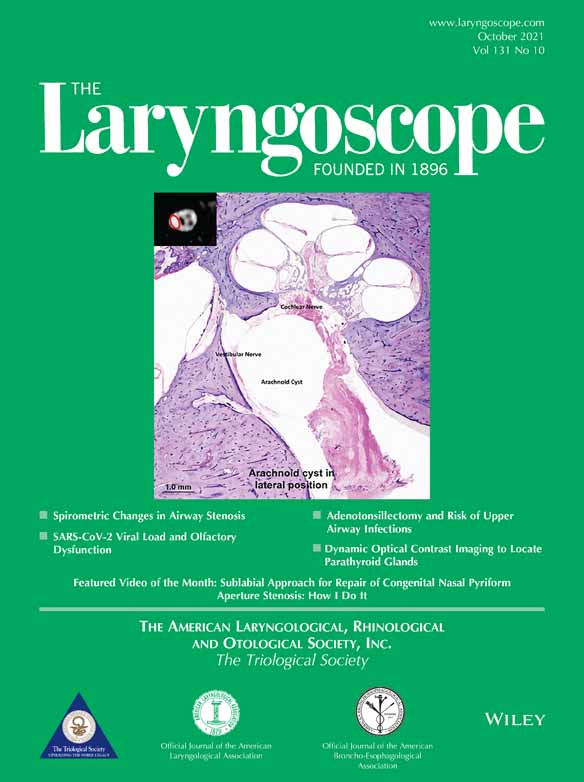Discordant SARS-CoV-2 Detection in the Nasopharynx Versus Trachea for Patients With Tracheostomies
Editor's Note: This Manuscript was accepted for publication on April 19, 2021.
The authors have no funding, financial relationships, or conflicts of interest to disclose.
This work was accepted for Podium Presentation at the American Broncho-Esophagological Association (ABEA) Annual Meeting, April 7–11, 2021, to be held in a virtual format.
Abstract
Objectives/Hypothesis
Patients with tracheostomies have an anatomically altered connection between their upper and lower airways that could impact SARS-CoV-2 testing. Our goal was to evaluate for discordance in SARS-CoV-2 detection in hospitalized patients with COVID-19 and tracheostomies based on the site analyzed.
Study Design
Retrospective chart review.
Methods
This single-institution study evaluated hospitalized patients with COVID-19 who had tracheostomies placed during their treatment. We analyzed SARS-CoV-2 RNA nucleic acid amplification test (NAAT) results after tracheostomy. All included patients had nasopharyngeal (NP) and tracheal (TR) samples taken within a 48-hour period, allowing us to characterize rate of test concordance.
Results
Forty-five patients met our inclusion criteria. Thirty-two (71.1%) patients had entirely concordant results after tracheostomy. However, 13 (28.9%) patients had at least one set of discordant results, the majority of which were NP negative and TR positive. There were no statistically significant differences in demographic or clinical variables, including time to tracheostomy and time to testing, among patients with concordant versus discordant SARS-CoV-2 results.
Conclusion
This represents the first study to examine SARS-CoV-2 RNA NAAT concordance between NP and TR sites in hospitalized patients with COVID-19 and tracheostomies. One-third of patients demonstrated discordant testing when NP and TR specimens were collected within a 48-hour time period. Thus, patients with tracheostomies may have a higher false-negative rate if only one site is assessed for SARS-CoV-2. We recommend analyzing samples from both the nasopharynx and trachea for these patients until more prospective data exist.
Level of Evidence
4 Laryngoscope, 131:E2634–E2638, 2021




